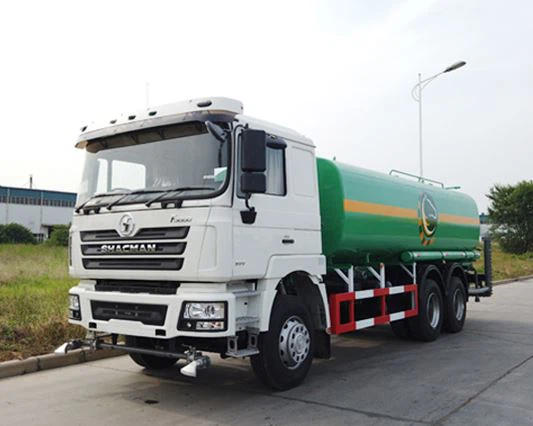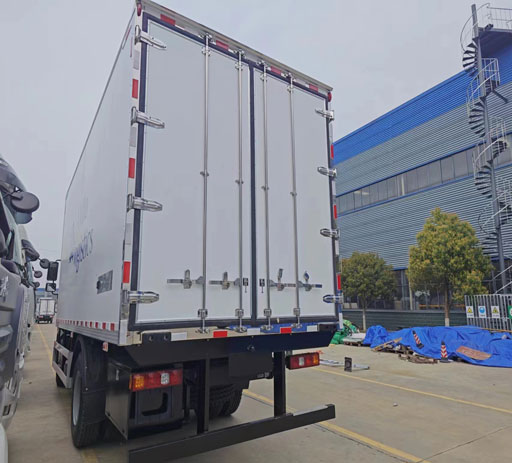Everything You Need to Know About Street Cleaner Trucks

Street cleaner trucks play an essential role in maintaining urban environments, contributing significantly to cleanliness, public health, and city aesthetics. These specialized vehicles are designed to efficiently remove debris, dust, and pollutants from road surfaces, ensuring safer and cleaner streets. In this article, we will delve into the various aspects of street cleaner trucks, exploring their types, functions, benefits, and operational insights. Whether you are a city planner, environmental enthusiast, or just curious about how your city stays clean, this guide is for you.
1. What is a Street Cleaner Truck?

A street cleaner truck is a specialized vehicle designed for cleaning roadways and public areas. Equipped with unique features such as brushes, high-pressure water jets, and vacuum systems, these trucks effectively remove dirt, litter, leaves, and other debris from urban streets and parking lots.
1.1 The Components of Street Cleaner Trucks
- Brushes: Rotating brushes sweep debris into a collection hopper.
- Vacuum System: This component vacuums fine dust and dirt particles, preventing them from being released into the air.
- Water Jets: High-pressure water jets dampen dust and help in cleaning stubborn dirt.
- Hopper: The storage compartment where collected debris is stored until disposal.
1.2 Types of Street Cleaner Trucks
| Type | Description |
|---|---|
| Mechanical Broom Sweepers | Utilize rotating brushes to sweep up debris, ideal for light cleaning tasks. |
| Vacuum Sweepers | Use a powerful vacuum system to pick up small particles and fine dust, excellent for thorough cleaning. |
| Regenerative Air Sweepers | Employ a combination of air pressure and vacuum, effective for both wet and dry cleaning. |
| Waterless Sweepers | Designed to operate without water, focusing on environmentally friendly methods of dust control. |
2. The Importance of Street Cleaner Trucks
Street cleaner trucks are vital for maintaining urban environments. They contribute to various objectives related to public health, environmental protection, and civic pride.
2.1 Enhancing Public Health
By removing litter, debris, and pollutants, street cleaners help reduce the risks associated with diseases that can arise from rotten organic waste or stagnant puddles. Regular cleaning also prevents the spread of allergens and other harmful microorganisms.

2.2 Environmental Benefits
Street cleaner trucks contribute to environmental conservation by removing pollutants that could otherwise enter storm drains and oceans. This cleaning helps maintain water quality and protects local ecosystems.
2.3 Aesthetic Appeal
Clean streets enhance the visual appeal of cities, fostering a more positive image for residents and visitors alike. A well-maintained environment can also boost local businesses and tourism.
3. How Street Cleaner Trucks Operate
Understanding the operational aspects of street cleaner trucks is crucial for appreciating their impact. These vehicles function through a systematic approach designed for maximum efficiency.
3.1 Daily Operations and Scheduling
Most cities have a cleaning schedule that outlines when and where street cleaning occurs, with emphasis on busy areas during off-peak hours to minimize disruptions.
3.2 Equipment Maintenance
Regular maintenance of street cleaner trucks is essential for optimal performance. This includes checking the brushes, vacuum systems, and water tanks regularly to prevent breakdowns and maintain cleaning efficiency.
3.2.1 Checklist for Maintaining Street Cleaner Trucks

- Inspect brushes for wear and tear.
- Ensure vacuum motors are operational.
- Check water jets for blockages.
- Regularly clean the hopper for odors and residues.
4. Cost Factors of Street Cleaning
Operating a street cleaner truck involves several costs, which can vary significantly based on factors such as the size of the truck, technology, fuel consumption, and maintenance.
4.1 Initial Purchase and Leasing Costs
Investing in street cleaner trucks can require significant capital. Municipalities can either purchase or lease these vehicles, and each option has its pros and cons.
4.2 Operating Costs
Fuel, labor, and maintenance represent the primary ongoing costs associated with street cleaning operations. Efficient route planning and regular maintenance can help mitigate these expenses.
4.3 Budgeting for Street Cleaning
City planners must carefully budget for street cleaning, balancing costs with the need for efficient urban cleanliness. This involves understanding the total cost of ownership, including financing, maintenance, and operational overhead.
5. Innovations in Street Cleaning Technology
As technology advances, so do the capabilities of street cleaner trucks. New innovations aim to enhance cleaning efficiency and reduce environmental impacts.
5.1 Automation and Smart Technologies
Automated street cleaning technology, including GPS navigation and autonomous vehicles, is emerging to improve efficacy and safety in urban areas.
5.2 Eco-Friendly Solutions
Innovative manufacturers are creating electric street cleaner trucks that minimize emissions and noise pollution, contributing to sustainable urban development.
5.3 Waste Recycling Systems
Some modern street cleaners are equipped with recycling mechanisms that separate debris into recyclable materials on-site, promoting waste reduction efforts.
6. Regulations and Compliance
Street cleaning operations are subject to various regulations aimed at ensuring public safety and environmental protection.
6.1 Local and National Regulations
Since street cleaning is critical for public health and safety, many cities and countries have established guidelines and protocols that govern these operations.
6.2 Environmental Compliance
Street cleaning trucks must adhere to environmental regulations, including emission standards and waste disposal requirements. Keeping up with these regulations is essential for operational legitimacy.
7. Case Studies: Successful Street Cleaning Programs
Various cities worldwide have successfully implemented street cleaning initiatives that serve as exemplary models. Here are a few notable examples.
7.1 San Francisco, California
San Francisco boasts a comprehensive street cleaning program focusing on sustainability, employing both manual and mechanized cleaning methods that utilize environmentally friendly products.
7.2 Amsterdam, Netherlands
Amsterdam utilizes innovative, small cleaning vehicles for an efficient cleaning process within its densely populated urban structure, while also emphasizing eco-friendly practices.
8. Trends in Street Cleaning
The landscape of urban street cleaning is continuously evolving. Here are some of the latest trends shaping the future of street cleaner trucks and operations.
8.1 Increased Use of Data Analytics
Data analytics is increasingly being used to optimize street cleaning routes and schedules, ensuring that resources are allocated effectively and efficiently.
8.2 Community Engagement
Some cities are involving local communities in street cleaning efforts, fostering a sense of pride and encouraging participation in maintaining cleaner urban spaces.
9. Practical Tips for Effective Street Cleaning
9.1 Create a Schedule
Establishing a regular and consistent street cleaning schedule helps maintain cleanliness and informs residents when to expect cleaning crews.
9.2 Use Environmentally Friendly Cleaning Agents
Opt for biodegradable and non-toxic cleaning solutions to minimize the environmental impact of street cleaning operations.
9.3 Collaborate with Local Organizations
Partnerships with community groups can enhance the effectiveness of street cleaning efforts and promote awareness about urban cleanliness.
10. FAQ Section
10.1 What is the lifespan of a street cleaner truck?
The lifespan of a street cleaner truck can vary based on usage, maintenance, and technology but typically ranges from 10 to 15 years.
10.2 How frequently should streets be cleaned?
Street cleaning frequency depends on local conditions, traffic volume, and weather; busy urban areas may require cleaning multiple times a week, while quieter neighborhoods can be cleaned less often.
10.3 Are street cleaner trucks environmentally friendly?
Modern street cleaner trucks increasingly feature eco-friendly designs focusing on reducing emissions and employing sustainable materials, though traditional models may not be as efficient.
10.4 What type of debris can street cleaners pick up?
Street cleaners can remove a variety of debris, including leaves, trash, gravel, and small particles. However, larger items usually need manual intervention.
10.5 How much do street cleaning operations cost?
The cost of street cleaning operations depends on many factors, including city size, frequency of cleaning, and truck types used. City budgets dictate individual operational costs.
10.6 Can neighborhoods organize their own street cleaning efforts?
Yes! Many neighborhoods organize community cleanup events that can supplement official street cleaning efforts, often leading to positive communal engagement and a cleaner environment.
